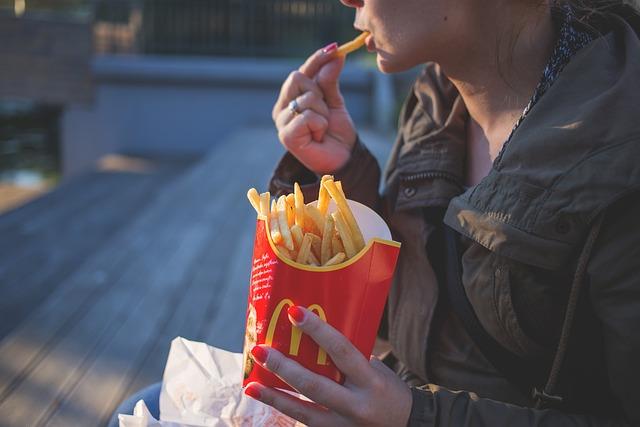Achieving sustainable fat loss is not just about quick fixes or crash diets; it’s about adopting healthy eating strategies that support long-term well-being and balance. In today’s fast-paced world, where diet trends come and go, it’s crucial to focus on nutritional habits that not only help shed excess pounds but also promote overall health. This guide will confidently walk you through the most effective and practical approaches to healthy eating, empowering you to make informed choices that align with your lifestyle and goals. By embracing these strategies, you’ll not only embark on a transformative journey towards fat loss but also cultivate a healthier relationship with food, ensuring your success is both lasting and fulfilling.
Crafting a Balanced Meal Plan for Lasting Results
Creating a meal plan that supports sustainable fat loss involves a delicate balance of nutrients, flavors, and personal preferences. The key is to include a variety of foods that nourish your body while keeping you satisfied. Focus on whole foods that are minimally processed, ensuring you get the maximum nutrients. Prioritize the inclusion of lean proteins like chicken, fish, or plant-based alternatives, which help maintain muscle mass and keep hunger at bay.
- Fruits and Vegetables: Aim to fill half your plate with a colorful array of fruits and veggies. These foods are rich in vitamins, minerals, and fiber, which are essential for optimal health and weight management.
- Whole Grains: Choose whole grains such as quinoa, brown rice, or oats over refined grains. They provide sustained energy and keep you feeling full longer.
- Healthy Fats: Incorporate sources of healthy fats like avocados, nuts, seeds, and olive oil. These not only add flavor but also promote satiety and nutrient absorption.
Remember, portion control is vital. Eating mindfully and listening to your body’s hunger cues can prevent overeating. This structured yet flexible approach allows for occasional indulgences, ensuring that your meal plan is not just effective but also enjoyable.

Incorporating Whole Foods for Optimal Nutrition
Embracing the power of whole foods is a transformative approach to achieving sustainable fat loss. These nutrient-dense foods are unprocessed and packed with essential vitamins, minerals, and antioxidants that support overall health. By focusing on whole foods, you can enhance satiety, boost metabolism, and reduce cravings, making it easier to maintain a caloric deficit without feeling deprived.
- Fruits and Vegetables: Rich in fiber and low in calories, these should be the cornerstone of every meal.
- Whole Grains: Choose options like quinoa, brown rice, and oats to provide sustained energy and fullness.
- Lean Proteins: Incorporate sources such as chicken, fish, and legumes to support muscle maintenance and repair.
- Healthy Fats: Avocados, nuts, and seeds offer heart-healthy fats that aid in nutrient absorption.
By prioritizing these foods, you not only support your weight loss journey but also promote a healthier, more vibrant lifestyle.

Mindful Eating Techniques to Control Portions
- Chew Slowly and Savor Every Bite: Take the time to enjoy each mouthful, allowing your taste buds to fully experience the flavors. This practice not only enhances your dining pleasure but also gives your brain the necessary time to recognize fullness, reducing the likelihood of overeating.
- Use Smaller Plates: Opt for smaller dishes and bowls to naturally limit portion sizes. This simple change can trick your mind into perceiving a fuller plate, which helps in consuming less without feeling deprived.
- Listen to Your Hunger Cues: Before reaching for that second helping, pause and assess your level of hunger. Often, we eat out of habit or boredom rather than genuine hunger. By tuning into your body’s signals, you can better manage portion sizes and make more mindful choices.
- Avoid Distractions: Eating in front of the TV or while scrolling through your phone can lead to mindless consumption. Create a calm and focused eating environment to enhance awareness of your intake and improve digestion.
- Pre-Portion Snacks: Instead of eating directly from the bag or box, portion out a single serving into a bowl. This prevents overindulgence and helps maintain control over snack portions.

Hydration and Its Role in Fat Loss
When it comes to shedding those extra pounds, staying well-hydrated is an often overlooked yet critical factor. Water plays a crucial role in the metabolic processes that enable fat loss. By maintaining optimal hydration levels, you can enhance your body’s ability to metabolize stored fat into energy. Moreover, drinking water can help suppress appetite and reduce unnecessary calorie intake. It’s not just about drinking more water, though; it’s about drinking the right amount at the right times.
- Start your day with a glass of water: Kickstart your metabolism by hydrating first thing in the morning.
- Drink before meals: Consuming a glass of water 30 minutes before eating can help you feel fuller and eat less.
- Keep a bottle handy: Having a water bottle within arm’s reach encourages regular sipping, ensuring consistent hydration throughout the day.
- Monitor your intake: Use apps or set reminders to track your water consumption, aiming for at least 8-10 cups daily, depending on your activity level and climate.
By integrating these simple yet effective hydration habits into your daily routine, you not only support your body’s fat-burning processes but also contribute to overall health and well-being. Remember, proper hydration is a cornerstone of sustainable fat loss and should never be underestimated.
